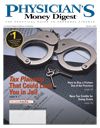Navigate the Ups and Downs of the Economy
Changes in the economy occur on a regularbasis, but unfortunately they rarely follow anyset schedule and can be hard to predict. You'lloften wish you could figure out some way to knowwhen economic conditions were about to change, orwhat adjustments you should make in your portfoliowhen a shift appears to be on the horizon. It's a trickytopic, and even economists disagree about the natureand causes of economic cycles. But we can at least takea look at some of the issues you need to be aware ofand help familiarize you with how it all works.
Some people tend to refer to changes in overalleconomic conditions as economic cycles or businesscycles. But it could be a misnomer to label thesechanges in this way because they are not, in fact, predictablycyclical—some economists prefer to callthem economic fluctuations. Regardless of the terminologyyou choose, changes in economic activity generallyoccur in the following four phases:
•Advance or expansion. When times are goodand the economy is growing, we typically see indicationssuch as falling unemployment rates and factoriestaking advantage of excess capacity, to name acouple. While the news during this phase is typicallypositive, you may soon start to see signs of problemsahead. If inflationary pressures begin to creep in, thisis typically when the Fed raises interest rates to helpkeep the economy from overheating.
•Peak. By the time we get to this point, theeconomy tends to be operating at full employment,factories have used up their excess capacity, andinflationary pressures are building. When risinglabor and material costs squeeze companies' profitmargins, the Fed will usually move more aggressivelyto slow growth by raising rates to help ease inflationarypressure.
•Decline, slowdown, or recession. Ideally,action by the Fed to tame inflation should allow theeconomy to gradually adjust to a sustainable long-termgrowth rate without the threat of inflation. Inreality, however, the combination of the Fed's tighteningand the need to correct accumulated imbalancesin labor and material supplies typically slowsgrowth to a level that's actually below the economy'slong-term potential. Unemployment rises, factoriesslow down, and inflationary pressures ease.
•Trough. At this point in the cycle, inventoriesare depleted. The Fed lowers interest rates to helpstimulate the economy, and businesses and homeownersrefinance mortgages to take advantage oflower rates. Companies will eventually purchasenew equipment and expand operations, helpinginventories to grow and marking the beginning of anew expansion.
As you can see, there are some telltale signs thatcan at least give some idea of where the economy isin its cycle. However, to make matters more complicatedfor you as an investor, the stock market tendsto move in advance of the economy, usually inresponse to investors' anticipation of what they seedown the road. The biggest challenge is being awareof when the shift to the next phase will occur,because predicting the market and the economy is abit like forecasting the weather. Working with afinancial consultant could prove valuable if youdecide to employ such a strategy.
Joseph F. Lagowski is vice president, investments, and a financialconsultant with AG Edwards in Hillsborough, NJ. He welcomesquestions or comments at 800-288-0901, or visit www.agedwards.com. This article was provided by AG Edwards & Sons, Inc,member SIPC.
